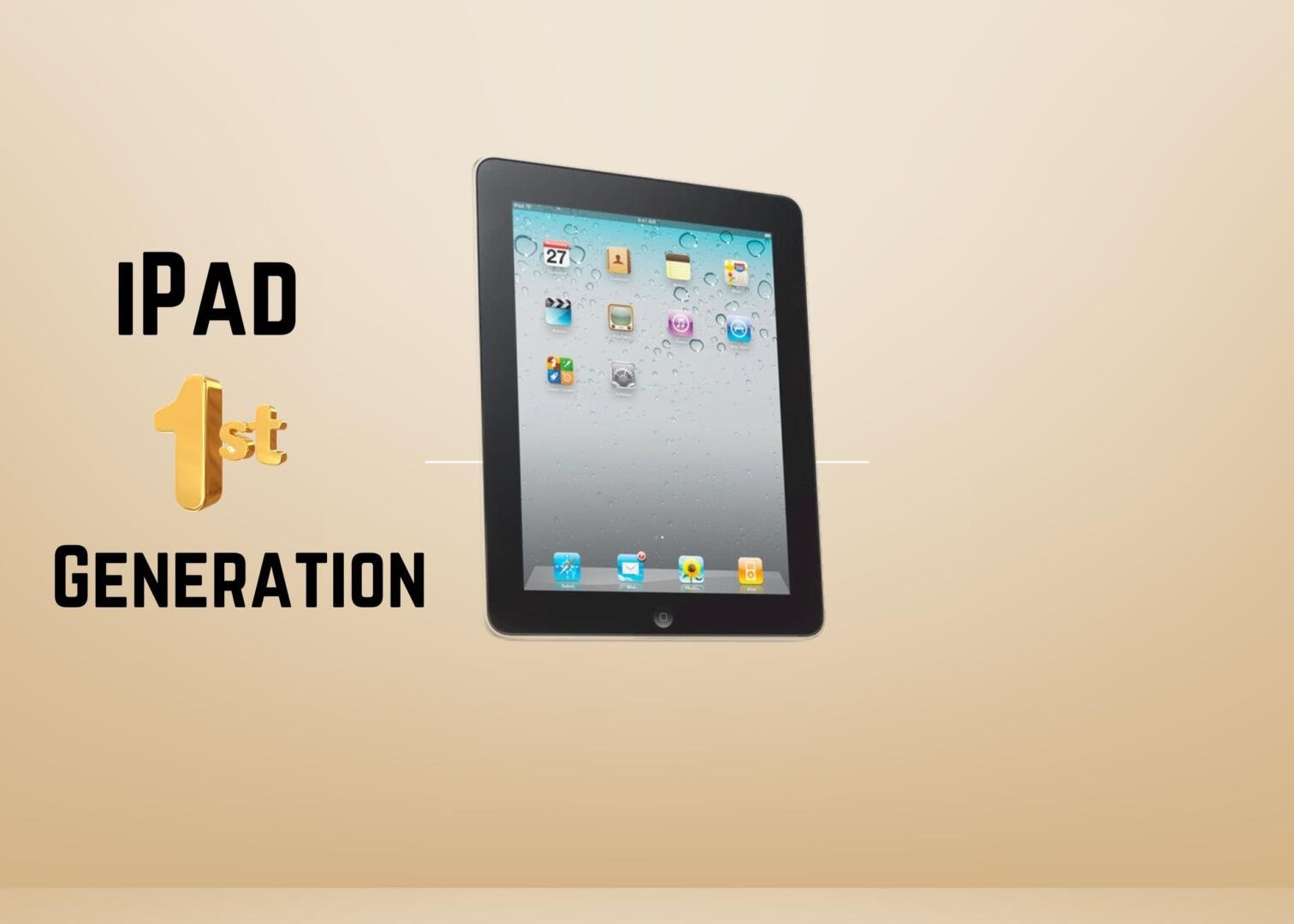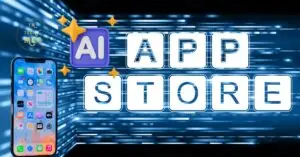Detail Review: iPad (1st generation) & it’s still worth it in 2023.

Detail Review iPad (1st generation) & it’s still worth it in 2023.
Hello there! Today, we’re talking about the very first iPad, the one that came out more than ten years ago. Now, in 2023, with so many new tablets out there, you might be wondering, “Is the old iPad any good?”
Let’s start by finding out what people think about it today. Do they still like this old tablet, or is it not as cool anymore? We’ll also look at the important stuff like what it can do and its history. What made it special back then?
But hang on, it’s not all good stuff. We’ll also talk about the problems people have with it, so you know both the good and the not-so-good.
If you’re thinking about getting one, don’t worry, we can help you find it. And if you already have one or are curious about using it today, we’ll talk about any issues with the software.
Now, let’s get to the fun part – we’ll compare the old iPad to the newer ones and see how it holds up. It’s like a tech battle you won’t want to miss.
And don’t go away just yet! Stick with us, and we’ll tell you where you can buy a real old iPad if you want one.
So, whether you’re feeling nostalgic or just looking for a budget-friendly tablet, stay with us as we figure out if Apple’s very first mobile computer can still be handy today. Get ready, it’s going to be interesting!
If you want to learn more about tech stuff, just go to TechyMeg for all the details!

| Feature | Specification |
|---|---|
| Model | iPad (1st generation) |
| Display | 9.7 inches, 1024×768 pixels |
| Processor | Apple A4 |
| RAM | 256 MB |
| Storage | 16, 32 or 64 GB flash memory |
| Camera | 0.3MP rear camera |
| Battery | 11,560mAh |
| Operating system | iOS 5.1.1 (upgradable to iOS 9.3.5) |
| Dimensions | 9.5 x 7.4 x 0.73 inches |
| Weight | 1.33 pounds |
Here are some additional details about the iPad (1st generation):
- It was released on April 3, 2010.
- It was available in Wi-Fi and Wi-Fi + Cellular models.
- It was discontinued on March 27, 2014.
Here are some pros and cons of the iPad (1st generation):
Pros:
- Affordable: The iPad (1st generation) is a very affordable tablet, especially considering its age. You can find used or refurbished models for as low as $50.
- Portable: The iPad (1st generation) is lightweight and easy to carry around, making it a good choice for travel or on-the-go use.
- Long battery life: The iPad (1st generation) has a long battery life, so you can use it for hours on a single charge.
- Large and bright display: The iPad (1st generation) has a large and bright display that is good for watching videos, browsing the web, or reading e-books.
- Good for basic tasks: The iPad (1st generation) is a good tablet for basic tasks such as web browsing, email, and social media.
- Versatile: The iPad (1st generation) can be used with a variety of accessories, such as keyboards, cases, and styluses.
Cons:
- Slow processor: The iPad (1st generation) has a slow processor, so it may not be able to handle more demanding tasks such as gaming or video editing.
- Not enough RAM: The iPad (1st generation) has limited RAM, which can also affect performance.
- Low-resolution display: The iPad (1st generation) has a low-resolution display, which can make text and images look blurry.
- No support for newer iOS versions: The iPad (1st generation) is not supported by the latest iOS versions, which means you may not be able to install the latest apps or features.
- No Face ID or Touch ID: The iPad (1st generation) does not have Face ID or Touch ID, so you will need to enter a passcode to unlock the device.
- No Apple Pencil support: The iPad (1st generation) does not support the Apple Pencil, so you cannot use it for drawing or note-taking.
The first iPad was a big deal when it came out. It was the first tablet that lots of people liked. It made tablets popular, and now there are many other tablets like it.
Even though it’s not the newest thing anymore, the first iPad can still do some simple stuff like going on the internet, checking email, and using social media. But if you want to do harder things like playing games or editing videos, it might not be so great.
If you want a cheap iPad, the first one could work for you. But if you want a stronger and more flexible tablet, you might want to think about getting a newer one.

iPad 1st generation Still worth it in 2023?
When we talk about how it looks, the original iPad had a 9.7-inch screen that was bigger than iPhones. At first, it looked like a big iPhone, but now it’s more like a small laptop. It has a classic design with a border around the screen, flat sides, and a curved back that makes it look somewhat modern.
But there are some downsides to the iPad 1. It doesn’t have the newer lightning port like modern devices, and it doesn’t have cameras on the front or back, which most tablets have now. Adding cameras could have made it much better.
One of the big problems with the iPad 1 is that it can’t get software updates anymore. It stopped getting them after iOS 5.1.1, which means it’s too old for modern stuff. Its processor and memory are also much weaker compared to today’s tablets, so it’s not good for everyday use.
But even with these problems, the iPad 1 did something really important. It made Apple work hard to make better iPads in the future. It’s kind of like the grandparent of today’s iPads.
Surprisingly, the iPad 1 still works pretty well when it comes to how it runs. Even though it’s old, its software is smooth, even compared to new iPads. Plus, it has a big battery that lasts a long time.
So, should you get an iPad 1 in 2023? Well, the answer is pretty clear: it’s not a good idea for everyday use because it’s too old and can’t do everything you’d want. But it’s a cool collector’s item for people who love tech history. It shows us where tablets started and how much they’ve improved.
In the end, while the iPad 1 might not be your main tablet today, it’s like a museum piece that reminds us of how far we’ve come in the world of tech.

Software limitations of the iPad (1st generation)
The software limitations of the iPad (1st generation) are something that potential buyers need to consider before making a purchase. While this device may still be functional and offer some basic features, it is important to understand its limitations in terms of software compatibility and performance.
The iPad (1st generation) runs on an older version of iOS, which means that it cannot support the latest apps and updates available on newer models. Many app developers no longer provide support for this outdated operating system, so you may not have access to popular apps or new features that have been introduced in recent years.
Due to hardware constraints, the iPad (1st generation) may experience slower performance when running more demanding tasks or multiple applications simultaneously. This can be frustrating for users who require a seamless multitasking experience or want to use resource-intensive apps such as video editing or gaming applications.
The limited storage capacity of the iPad (1st generation) can also pose challenges. With only up to 64GB available on some models, storing large files such as videos or high-resolution photos becomes difficult. Additionally, since iCloud was not yet widely used during this time period, relying solely on internal storage can quickly fill up your device’s memory.
Moreover, security updates are crucial for protecting devices from vulnerabilities and threats. However, with an unsupported operating system like iOS 5 found on the first-generation iPad, you will miss out on important security patches released by Apple over time. This could potentially expose your device and personal information to hackers or malware attacks.
Furthermore,, newer iPads come equipped with advanced features such as Face ID facial recognition technology and improved cameras for augmented reality experiences – all absent in the first-generation model. These advancements enhance user experience across various applications including photography and productivity tools.
Lastly,, keep in mind that although older iPads continue functioning well for basic tasks like browsing the internet or reading e-books,, they may not provide the same level of performance or software support as newer models. If you are looking for a more capable device, then it may be worth investing in a newer iPad with more up to date features.

Comparing the iPad (1st generation) with newer models
The iPad (1st generation) was a groundbreaking device when it was released in 2010, but how does it stack up against newer models? Let’s compare the first-generation iPad with its successors to see if it’s still worth considering in 2023.
In terms of design, the original iPad had a 9.7-inch display and weighed around 1.5 pounds. Compared to newer models like the iPad Pro 11-inch, which boasts a larger and more vibrant screen, as well as a sleeker and lighter build, there is no doubt that the older model falls behind in terms of aesthetics and portability.
When it comes to performance, the first-generation iPad had an A4 chip and limited RAM compared to the blazing fast processors found in today’s iPads. This means that running modern apps or multitasking may be sluggish on the older device.
Another significant difference lies in camera technology. The original iPad only featured one rear-facing camera with low resolution capabilities. In contrast, new iPads come equipped with advanced cameras that can capture stunning photos and videos.
One area where the first-generation iPad still shines is battery life. Due to its simpler hardware and less demanding software requirements at the time of its release, this early model can often outlast its successors when it comes to staying powered throughout the day.
However, one major drawback of using a first-gen iPad today is software compatibility. As Apple releases new iOS updates every year, older devices gradually lose support for these updates. This means that you may not be able to run certain apps or access all features available on newer iPads if you stick with an old model like this.
While owning an original iPad might bring some nostalgia factor or serve basic needs such as browsing websites or watching videos, upgrading to a newer model would provide you with better performance powerfully optimized for current software demands along with improved design elements such as high-quality displays and enhanced camera capabilities.





